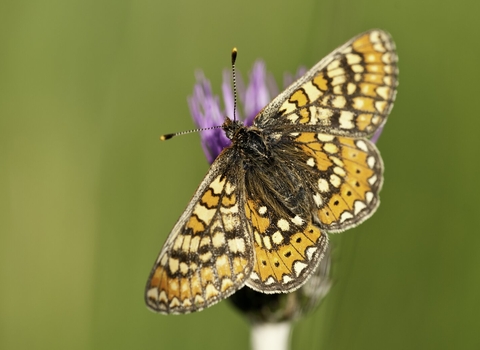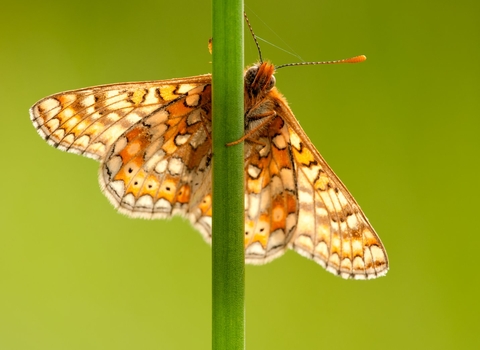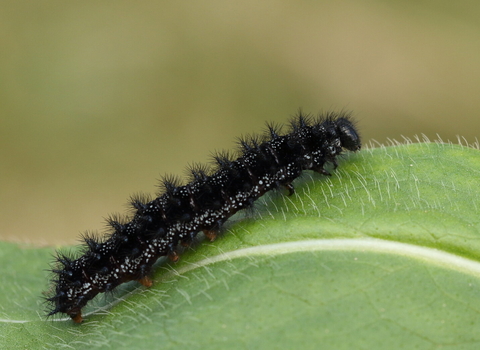
Marsh fritillary © Ross Hoddinott/2020VISION

Ross Hoddinott/2020VISION

Marsh fritillary caterpillar © Vaughn Matthews
Marsh fritillary
This beautiful butterfly is one of our rarest, now mostly restricted to the western parts of the UK.
Scientific name
Euphydryas auriniaWhen to see
Flies May to JulySpecies information
Category
Statistics
Wingspan: 30-50mmListed as a Section 41 species of principal importance under the NERC Act in England
UK BAP status: Priority Species
Butterfly Conservation priority: High
European Status: Vulnerable
UK BAP status: Priority Species
Butterfly Conservation priority: High
European Status: Vulnerable
Habitats
About
As the name suggests, the marsh fritillary is often found in wet and boggy places, like damp meadows, but can also be seen in a variety of other habitats where there's plenty of sun and scabious for the caterpillars to feed on. Devil's-bit scabious is the foodplant of choice, but they will occasionally eat field scabious or small scabious.The adult butterflies usually begin to emerge in May and can be seen flying into summer. Males will set up small territories, perching on flowers or grass stems and rushing up to meet any passing butterflies in the hope of finding a female. Once a female has mated, she will search for a suitable foodplant and lay a large cluster of eggs on the underside of a leaf - the clusters can contain over 300 eggs!
The eggs hatch after a few weeks and the tiny caterpillars spin a silk web, binding the leaves of the foodplant together. They live communally in these webs, feeding on the leaves. In late summer, they make a new communal web in which to spend the winter. They'll emerge around March to continue feeding, before pupating in a colourful chrysalis that hangs from a plant.
The marsh fritillary is one of our most threatened butterflies, having suffered severe declines in recent decades both in the UK and more widely in Europe. Local populations can fluctuate greatly from year to year, depending on weather, food availability and the abundance of a parasitic wasp that uses the caterpillars as hosts for its own offspring.
